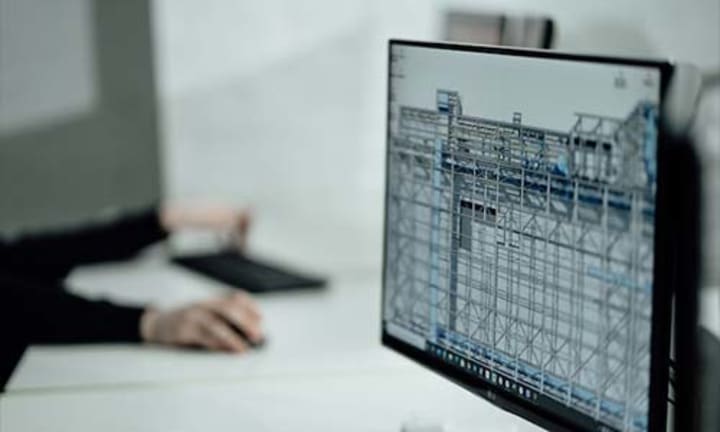How to use AI in Architecture
Architecture and Technology

Artificial Intelligence (AI) is a rapidly growing field that has the potential to transform many industries, including architecture. In this blog post, we will explore the ways in which AI can be combined with architecture, and how it is changing the field. We will also answer some common questions about the role of AI in architecture, including whether AI can take over architecture, what an AI architecture is, what the basic architecture of AI is, and whether architecture is a declining career.

How AI can be used in architecture
There are many ways in which AI can be used in architecture to improve the design, construction, and operation of buildings. Some of the most common applications of AI in architecture include:
Building Information Modeling (BIM): BIM is a digital representation of a building that can be used throughout its entire life cycle, from design to construction to operation. By incorporating AI into BIM, architects and engineers can use data and analytics to inform their design decisions and optimize building performance.
Smart Building Systems: Smart buildings are equipped with a variety of sensors, actuators, and other technologies that enable them to collect data about their environment and respond in real-time. This data can be used to optimize building performance, improve indoor air quality, and enhance the comfort and safety of occupants.
Construction Optimization: AI algorithms can be used to optimize construction schedules and resource allocation, reducing waste and minimizing the time required to complete a project. This can result in cost savings and increased efficiency, as well as a more sustainable construction process.
User Experience: AI algorithms can be used to personalize building environments, providing occupants with customized lighting, temperature, and ventilation settings. This can improve the comfort and well-being of occupants, as well as enhance the overall aesthetic appeal of a building.
Security: AI algorithms can be used to monitor building access and detect potential security threats. This can improve the safety of building occupants and ensure that a building is secure against potential threats.
Operations and Maintenance: AI algorithms can be used to optimize building operations and maintenance, reducing the frequency and cost of maintenance and ensuring that a building is always operating at peak efficiency.

Can AI take over architecture?
While AI has the potential to revolutionize many aspects of architecture, it is unlikely that it will completely take over the field. While AI algorithms can assist architects and engineers with certain tasks, they still require human oversight and decision-making. For example, while AI algorithms can suggest energy-efficient design options, they cannot replace the creativity and intuition of an architect in selecting the most aesthetically pleasing design. Additionally, the ethics and values of architecture, such as building for human needs and creating spaces that enhance well-being, cannot be fully automated.
How AI is changing architecture
It is changing architecture in many ways, including improving building performance, enhancing construction efficiency, improving user experience, enhancing security, and optimizing building operations and maintenance. By incorporating AI into the design and construction of buildings, architects and engineers can create buildings that are more sustainable, efficient, and comfortable for occupants. As the technology continues to evolve, we can expect to see even more innovative applications of AI in architecture in the future.

What is an AI architecture?
It is a system or framework that enables the integration of AI into various aspects of architecture. It includes the hardware, software, and other technologies required to collect and analyze data, as well as the algorithms and processes used to make decisions based on that data. AI architectures for architecture can be used for a wide range of applications, from optimizing building performance to enhancing the user experience.
What is the basic architecture of AI?
The basic architecture of AI consists of several key components, including data input and preprocessing, data analysis and decision-making, and output. The data input component collects and processes raw data from various sources, such as sensors and user interactions. The data analysis component uses algorithms and machine learning techniques to analyze the data and make decisions based on that analysis. The output component communicates the results of the analysis to the user or other systems. The overall architecture is designed to enable the AI system to learn and improve over time, using feedback from the data and the user to continuously improve its performance.
Is architecture a declining career because of AI ?
There is some speculation that the integration of AI into architecture may result in a decline in the demand for architects. However, it is unlikely that AI will completely replace architects in the near future. While AI algorithms can assist with certain tasks, such as design optimization and construction schedule, they still require human oversight and decision-making. In addition, the ethics and values of architecture, such as building for human needs and creating spaces that enhance well-being, cannot be fully automated. Instead, AI is likely to augment the role of architects, allowing them to be more efficient and effective in their work. Ultimately, the integration of AI into architecture is likely to result in new opportunities for architects, rather than a decline in the field.
Will AI replace architects?
There is no definitive answer to the question of whether AI will replace architects, as the future of AI and its impact on the field of architecture is still largely unknown. However, it is unlikely that AI will fully replace architects in the near future. While AI algorithms can assist with certain tasks, such as design optimization and construction scheduling, they still require human oversight and decision-making. In addition, the ethics and values of architecture, such as building for human needs and creating spaces that enhance well-being, cannot be fully automated. Rather than replace architects, AI is likely to augment their role and allow them to be more efficient and effective in their work. Ultimately, the integration of AI into architecture is likely to result in new opportunities for architects.
About the Creator
HAMOUN NIK
Hi everyone this is Hamoun and i'm passionate about Architecture, Construction and Technology
Owenr of HN REPUBLIC LLC. architecture and construction company located in NYC






Comments (1)
Fascinating! I love it.